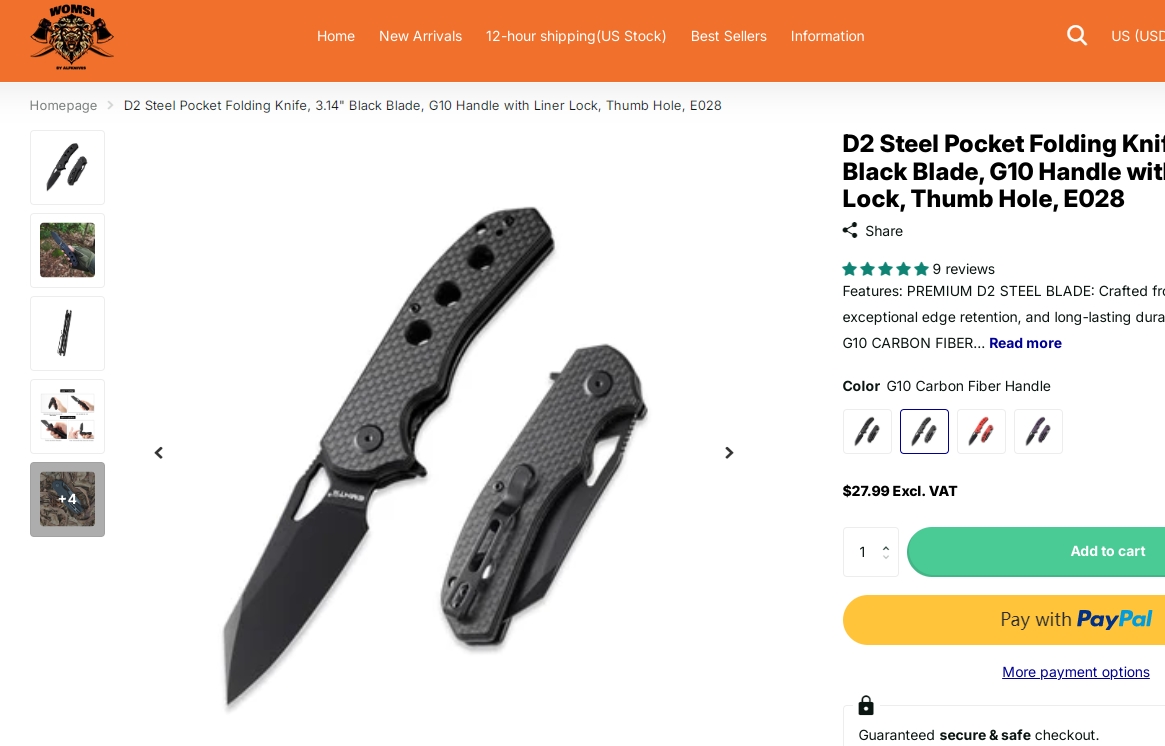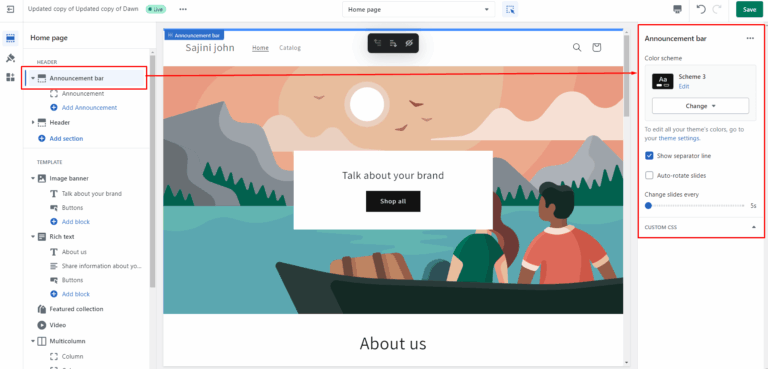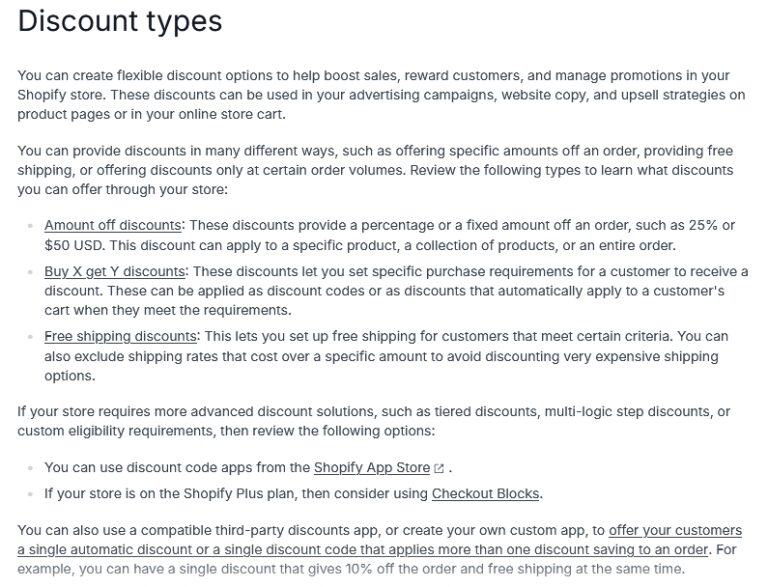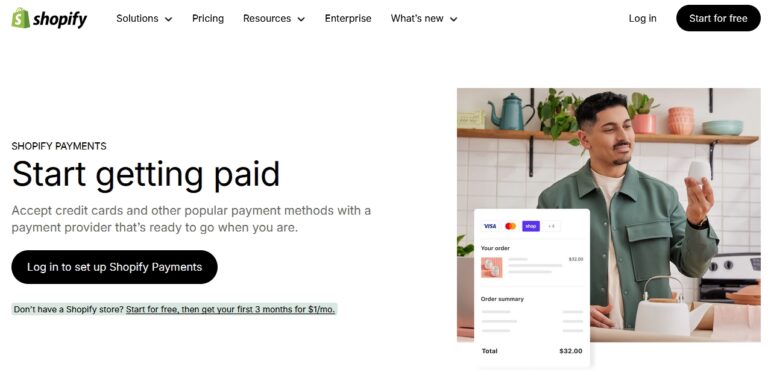Proven Strategies For How to Increase Sales on Your Shopify Store

Got traffic but no sales on Shopify? Here’s why.
Some existing online stores may be attracting traffic just fine but the sales aren’t forthcoming.
In that case, you need to put yourself in the shoes of your shoppers. You’ve gotten people to hang out in your store, but they aren’t feeling it. Why is that?
Here are a few reasons why your traffic isn’t converting:
- Wrong audience. You could be attracting the wrong crowd. Whether it’s because your SEO is misleading searchers or your paid ad strategy is going after the wrong demographics, you need to fix it so that the right shoppers can find and buy your product.
- Lack of trust. Shoppers have become smart about avoiding scams, so they look for reasons to trust the brands they shop with. Create trust by showcasing your customer reviews and other social proof as well as by making your dedication to their security clear.
- Not mobile-friendly. Increasingly, people are using their mobile devices to shop and buy. Don’t miss out on that valuable traffic by not optimizing your store pages for the mobile experience.
- Poor navigation. You want to make it as easy as possible for your shoppers to find exactly what they are looking for, so your navigation must be on point. Add your Shopify collections in your navigation menu and throughout your homepage to get them to the product they want faster.
- Low-quality images. Your images, just like your descriptions, are the final piece of product marketing for the amazing wares you want to sell. Ensure you have high-quality images that follow the best practices so that your shoppers can really get a feel for what you sell.
- Product descriptions. The reason they are shopping is the products, so if you haven’t put in the work to describe them fully and evocatively, they have no reason to stick around.
- Store design. If your store looks just like everyone else’s, it’ll just get forgotten. Or worse, it looks worse. You want to create custom store pages that are super on-brand so that nobody forgets who you are. Make it look good and make it look like you.
Now that you know why you might be having issues with conversion, let’s get into the tactics you can use to get those sales racked up on Shopify.
Contents
- 1. Develop email marketing campaigns that convert
- 2. Invest in your social media marketing strategy
- 3. Target your ideal customers with paid advertising
- 4. Offer free shipping
- 5. Earn trust with great social proof and UGC
- 6. Pursue and showcase customer reviews
- 7. Optimize the shopping experience for speed and mobile
- 8. Add Instagram and Facebook as sales channels
1. Develop email marketing campaigns that convert
With your lead capture strategy in place, you can start creating email marketing campaigns that keep your brand on their minds and drive new sales.
For every dollar spent on email marketing in ecommerce, the return on investment is $45.
Spending a buck and getting a 45x return is really a no-brainer, so don’t skimp on your email marketing efforts!
To leverage that email list effectively, you’ll want to develop a strategy that relies on segmentation and drip email sequences.
Start your strategy with these buckets:
- Audience: first-time users, regular customers, browse abandonment users, cart abandonment users, etc.
- Email workflows: transactional (like order and shipping confirmations), promotional (big sales and special offers), and lifecycle marketing emails (cart abandonment, re-engagement, welcome series)
Segmentation allows you to speak more directly to customers with different needs to increase the likelihood of conversion.
Email drip campaigns you can develop for your Shopify store include:
- Welcome emails
- Browse abandonment reminders
- Post-purchase emails
- Cart abandonment reminders
- Product launches and company updates.
A great ecommerce marketing strategy wouldn’t be complete without a strong social media game.
For ecommerce brands, Instagram has proven a powerful marketing tool with its focus on images and the ability to tag products for easy shoppability.
In 2025, its global user base is expected to balloon to over 1.4 billion. While you won’t be targeting all of those folks, your ideal audience will certainly be somewhere in there.
Pinterest is another shoppable visual platform where shoppers congregate to find great new products (like yours) and develop relationships with brands.
With consistent posting, you can start building followers and with it new traffic and brand awareness. You’ve already warmed these leads with great content, so when they land on your store, they are more ready to purchase.
To help you in your social media marketing efforts, you can enlist the help of Shopify tools that enable you to post more efficiently, pull your social feeds onto store pages, and offer live chat through social messaging.
3. Target your ideal customers with paid advertising
The last step to gathering that all-important store traffic is to create paid advertising campaigns that are capable of targeting just the right people.
You can do your best to take the top organic spots in Google, but it remains that Google ads always top the search results.
Luckily, you can get up there too with paid search ads and Google Shopping ads (to show off particular products).
Bid for search keywords you want to show up for and just pay for the clicks you get.
Instead of targeting keywords, you target particular audiences with your Facebook and Instagram ads.
With their overwhelming repository of personal information (likes, locations, brand associations, politics, etc), they can show your ads to the people most likely to purchase your products.
You can continue to tweak your ad copy, visuals, and targeting as you go to get it just right. As long as you are making more than you are spending, it’s a good way to drive traffic.
4. Offer free shipping
The phrase ‘free shipping’ is powerful. It’s a psychological unblocker for the sales pitch to come.
When shoppers know they don’t have to worry about some last-minute costs tacked on to their cart, they are more likely to stick around and buy.
A 2019 survey found that 68% of shoppers didn’t make a purchase at least half the time when free shipping wasn’t an option. Most shoppers (80%) actually expect free shipping when their orders exceed a certain dollar amount.
This is especially true if you offer conditional free shipping, where shoppers need to spend enough to unlock free shipping. This is a powerful strategy for boosting average order values (AOV).
You can also offer free shipping for specific products to help clear out inventory or for certain holidays as an extra incentive to buy from your brand.
While you’d love to think that shoppers make their purchasing decisions based on your great marketing alone, the fact is that they most trust their fellow consumers.
Adding the sentiments of your happy customers to your store can do a lot to convince prospective buyers to take a chance on you.
By taking user-generated content (UGC) and showcasing it on your store, you can show potential customers that your product is well-loved and trusted already.
A popular form of UGC is Instagram posts from customers using or wearing your products out in the real world.
Social proof is powerful and you want to put in real effort to encourage the creation of it and to display it prominently on your store pages.
If you’ve been featured in publications—like gift guides or great reviews—or you’ve been given an award, that’s a great opportunity to add those logos and quotes to your store to gain the carryover trust from those organizations.
6. Pursue and showcase customer reviews
A subset of user-generated content (UGC) is customer reviews.
As we mentioned earlier, shoppers most trust other shoppers when making purchase decisions online. Reviews from your customers are a valuable barometer of how good your products are.
According to Statista, 53% of shoppers say that reviews and ratings are the most important attributes of the online shopping experience, only behind navigation.
To take advantage of this, you want to ask your customers for reviews and add them to your product pages. Especially positive reviews can be excerpted and used throughout your store in customer testimonial sliders.
7. Optimize the shopping experience for speed and mobile
When a store takes forever to load, shoppers don’t bother to wait around to see what the fuss is about. There are so many stores out there and no reason to deal with a slow one.
Nearly half of online shoppers expect a load time of two seconds or less for webpages and mobile users expect pages to load in four seconds or less.
Further, it’s been shown that a delay of one second in load time equates to an overall 7% loss in conversions.
All that to say, speed up your store pages!
Speed is just one dimension of the experience though.
Given that so many people are now shopping from their mobile devices (and that Google specifically looks at your store’s mobile version), it’s no longer an option to ignore the mobile experience.
The best ecommerce stores out there also have the best mobile landing pages for good reason—it means increased sales and conversions.
To understand where you stand with regard to speed and mobile responsiveness, just plug your URL into Google’s PageSpeed Insights portal.
There you will find how quickly your page loads on both mobile and desktop, as well as your Core Web Vitals scores. It will then give recommendations on how to improve your stats.
8. Add Instagram and Facebook as sales channels
Your main Shopify storefront is your ecommerce HQ, but that doesn’t mean it’s the only game in town.
By adding extra sales channels, you can get in front of more shoppers and start new customers relationships.
Instagram makes selling easy with their Instagram Shopping feature, which allows brands to have mini stores on the platform and include product tags in posts to make them shoppable.
With Shopify, you can even let your customers checkout from Instagram.
To get your Instagram Shopping profile up and running, you just use Facebook’s Commerce Manager, which makes syncing products simple.
Unlike marketplaces like Amazon, these sales channels can lead directly back to your product pages, allowing you to keep control of the customer relationship and your marketing program.
The little things can make a big difference
You don’t need to do everything in this post to start seeing big impacts to your sales numbers. Start with low-hanging fruit and go from there.
Every business is different and the returns from any particular implementation are going to vary. The biggest thing you can do to make positive changes to your business is to listen to your customers and learn what will work for them.
A lot of these suggestions are easily implemented through the use of apps or tools, so you just need to determine what works best for your store and your customers.




